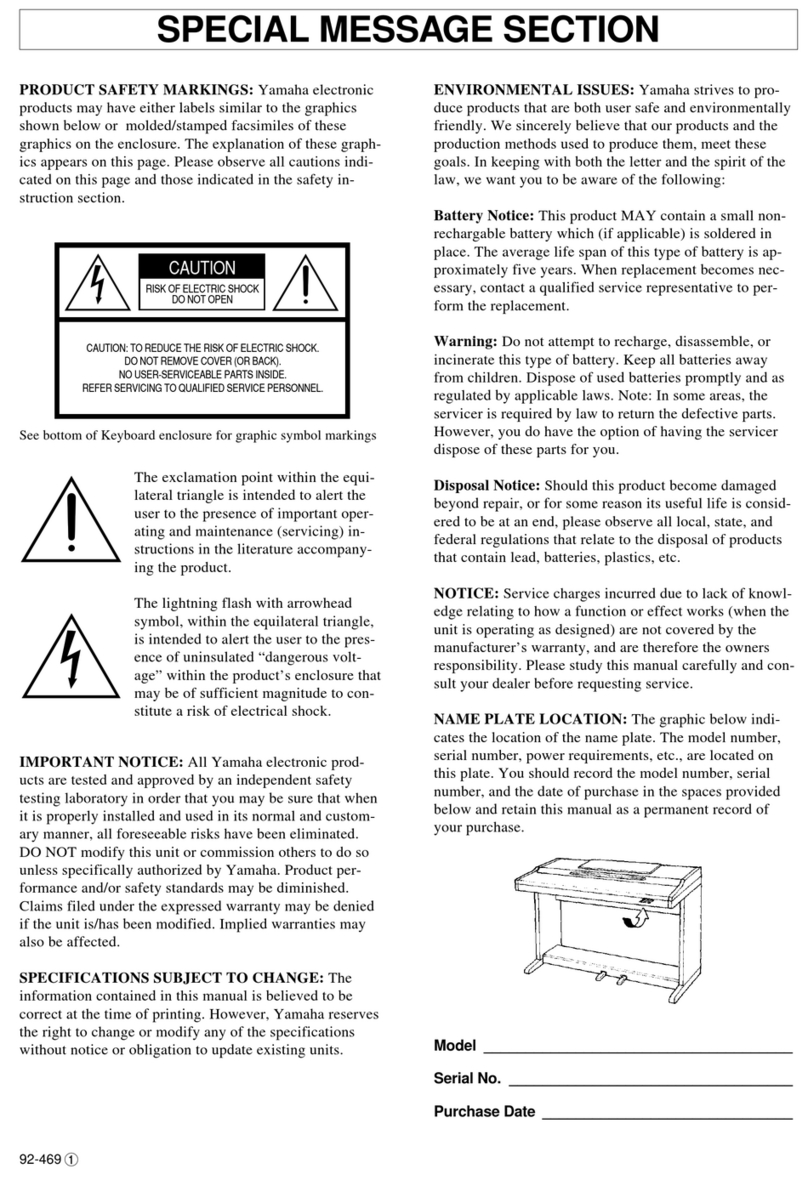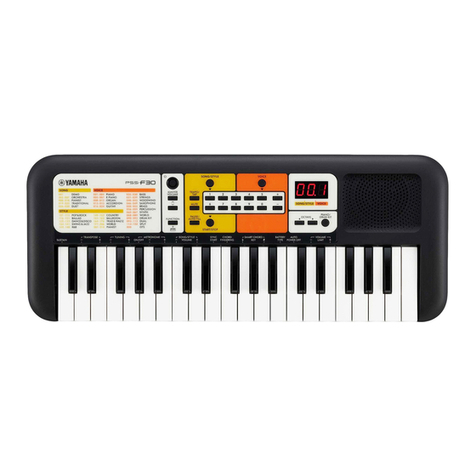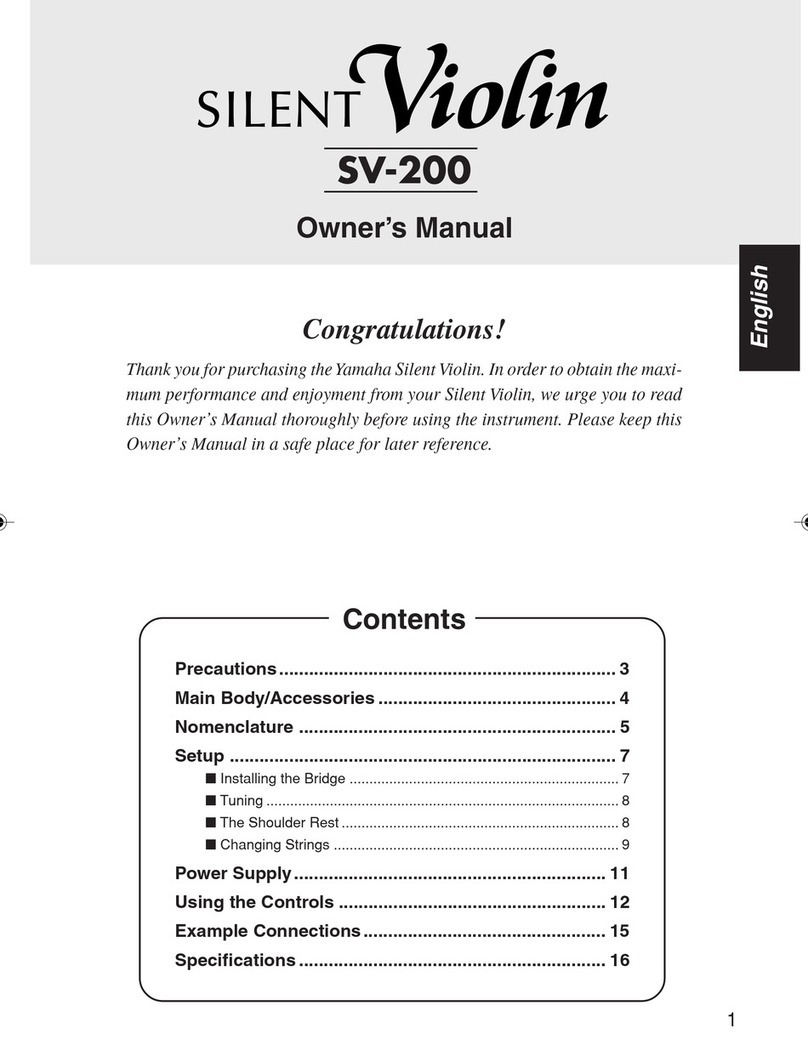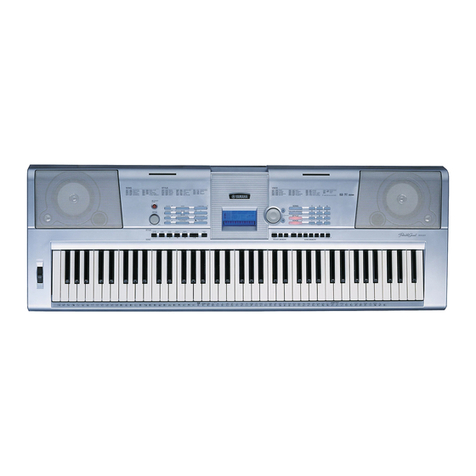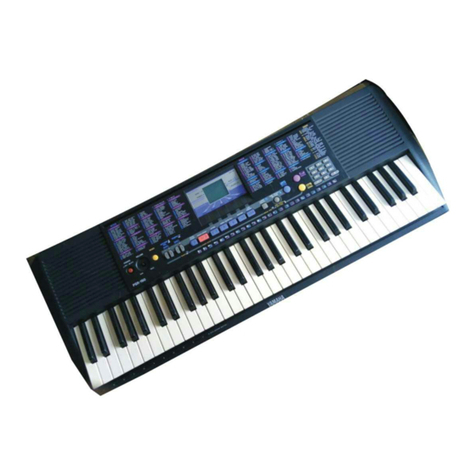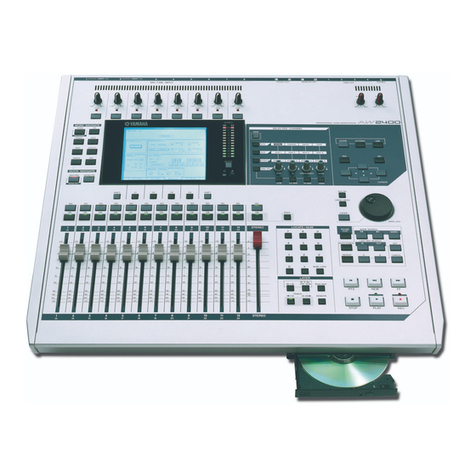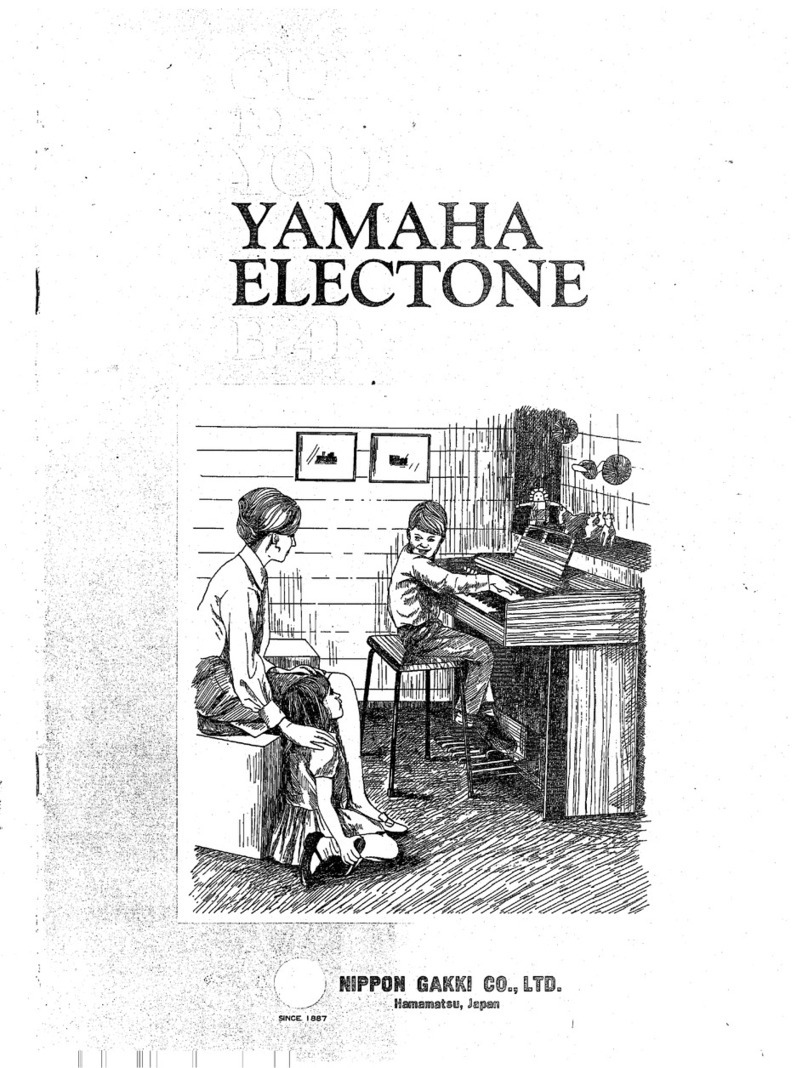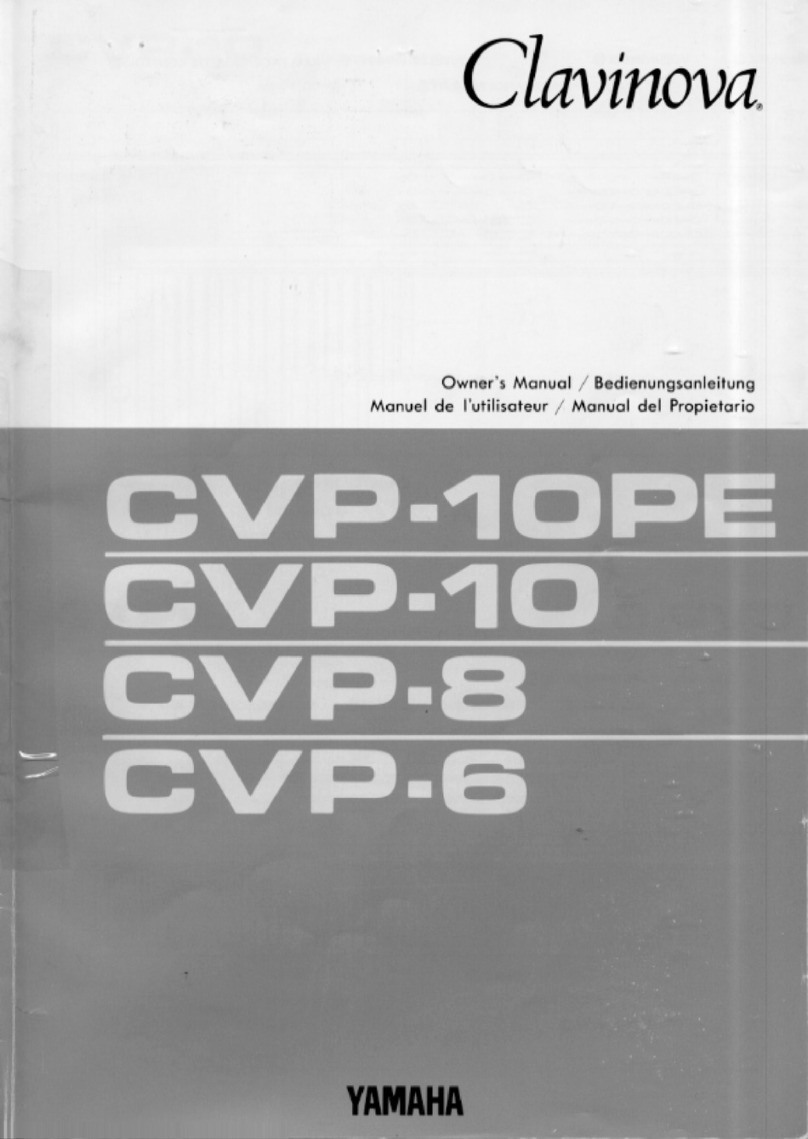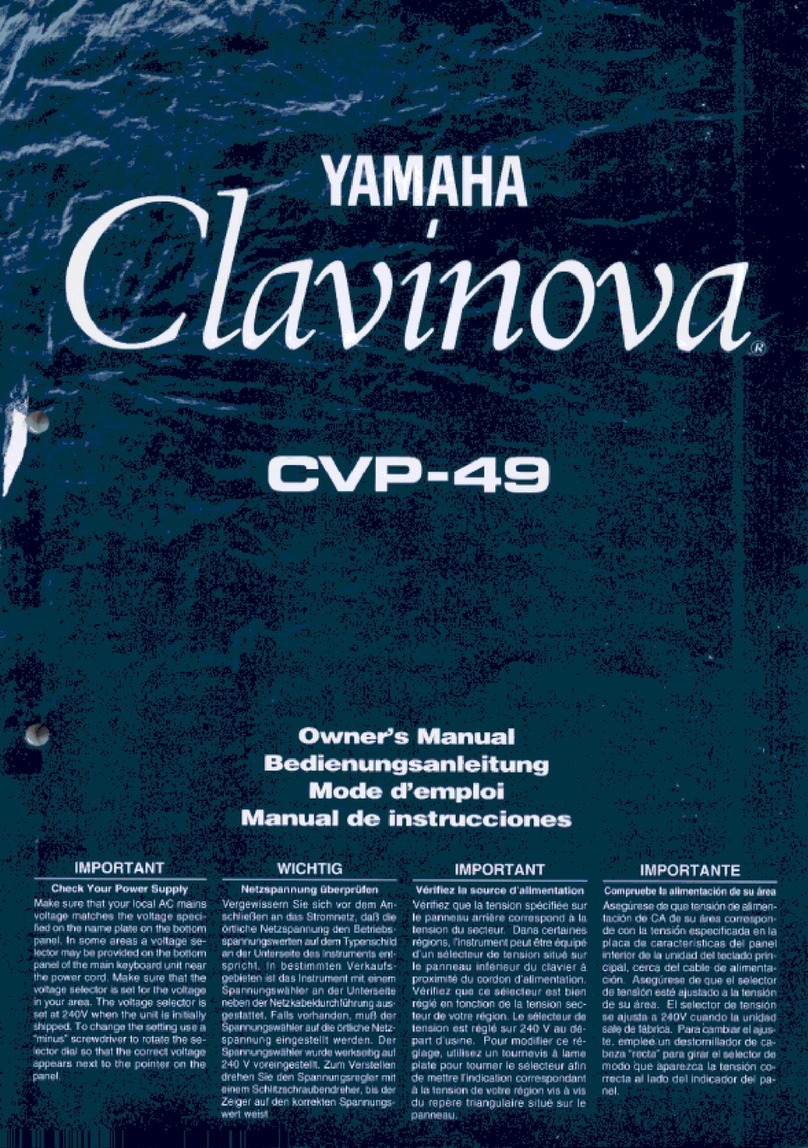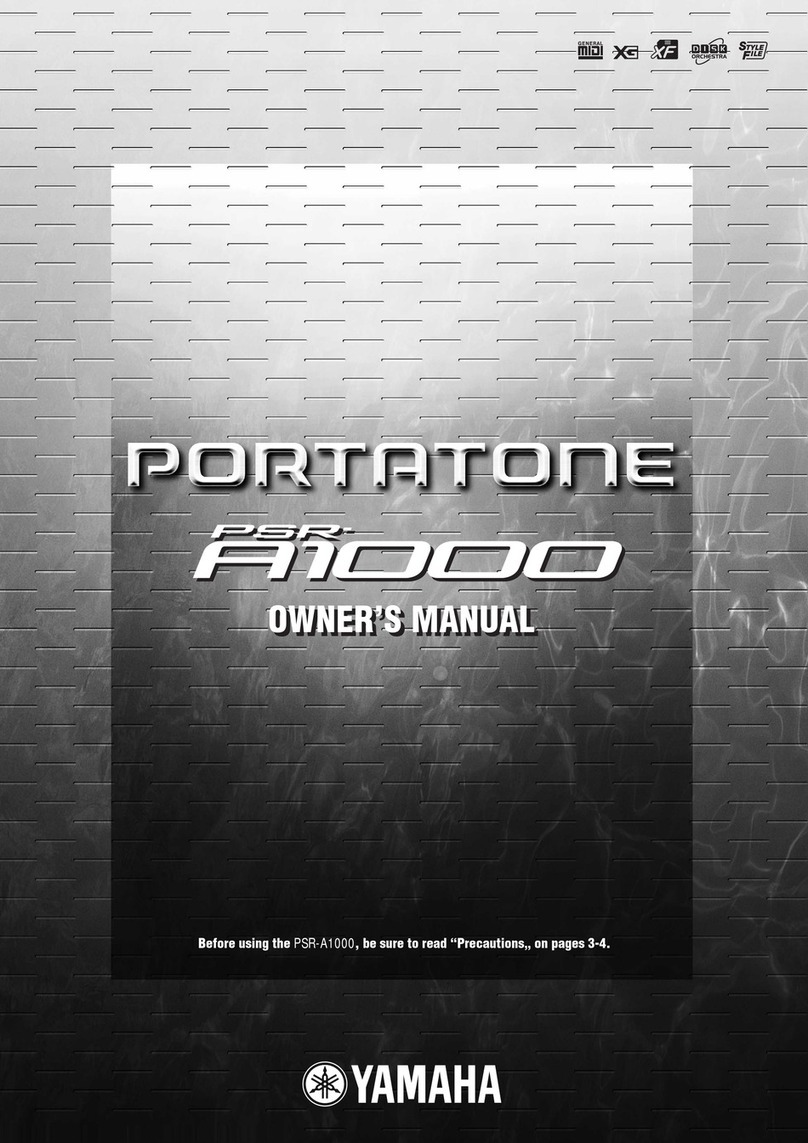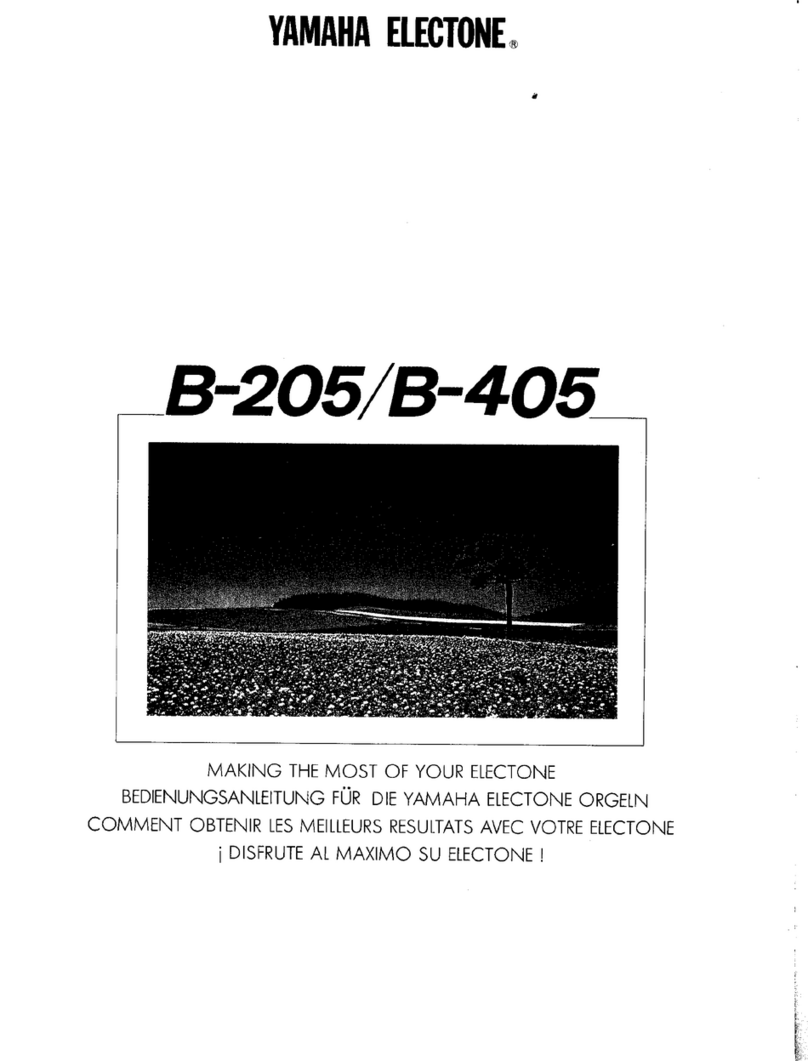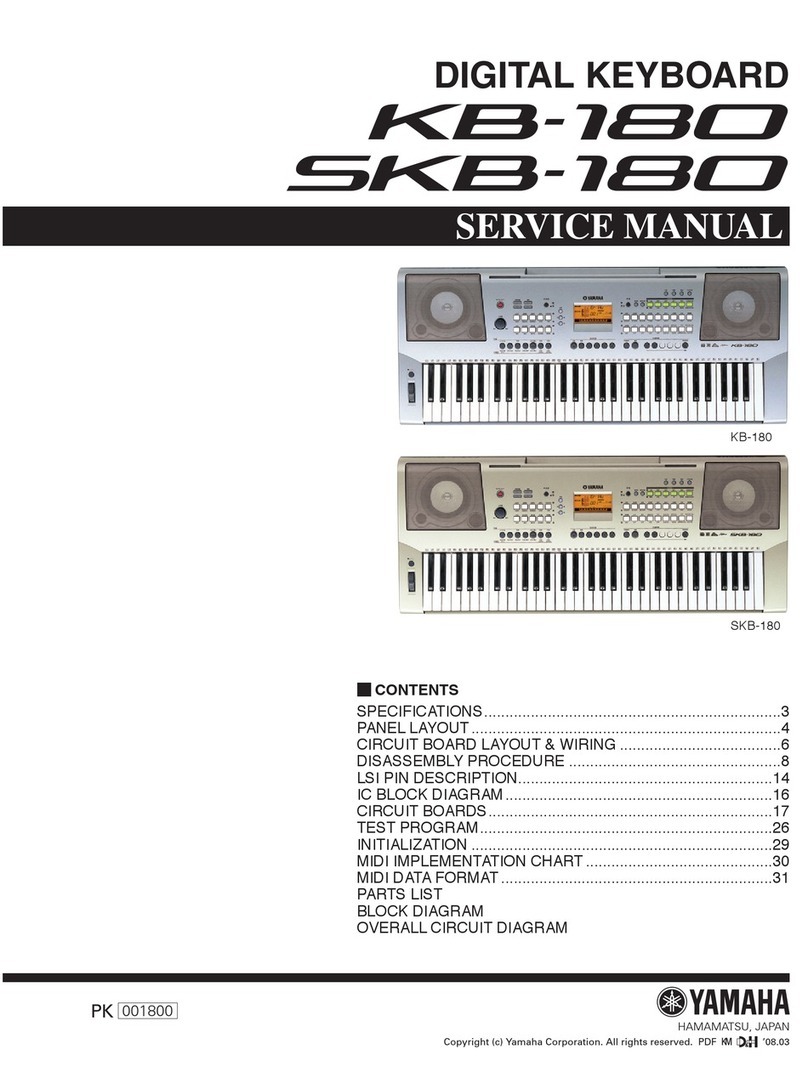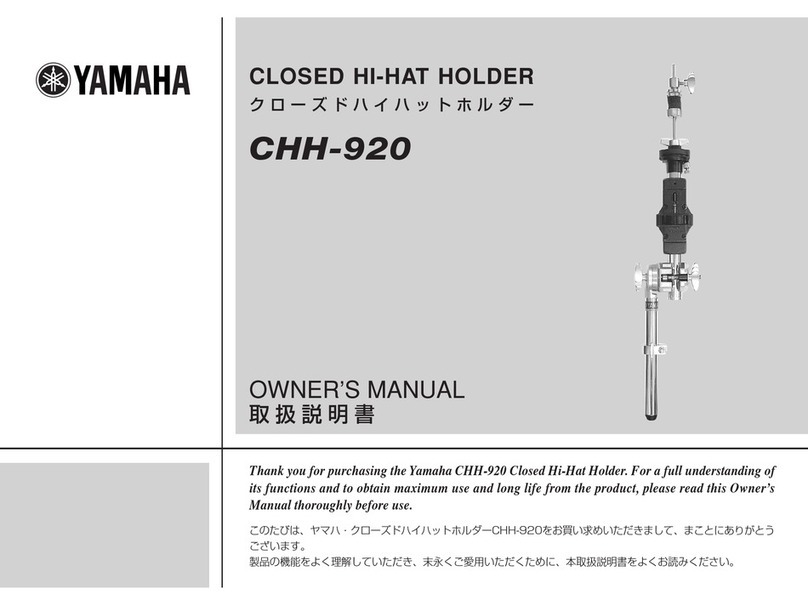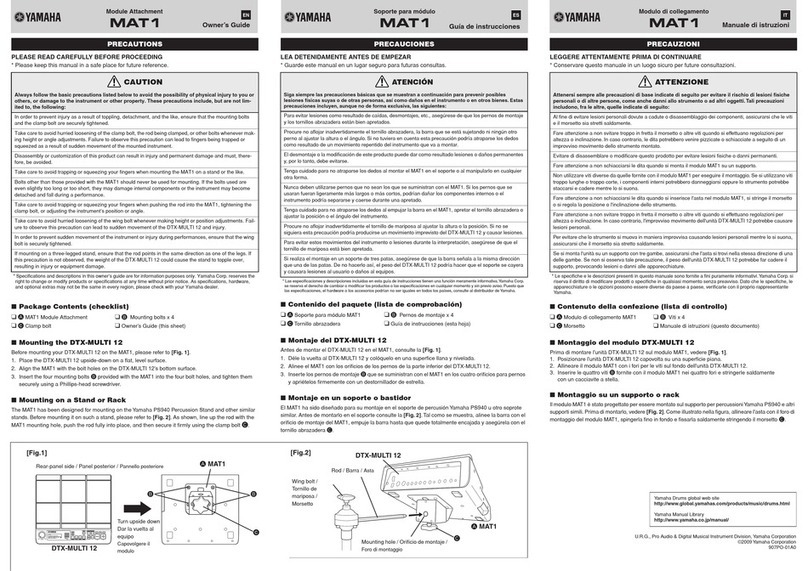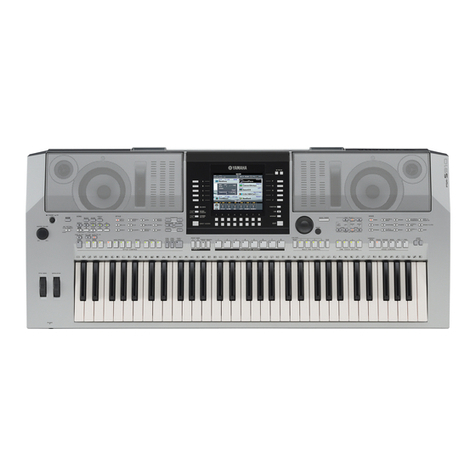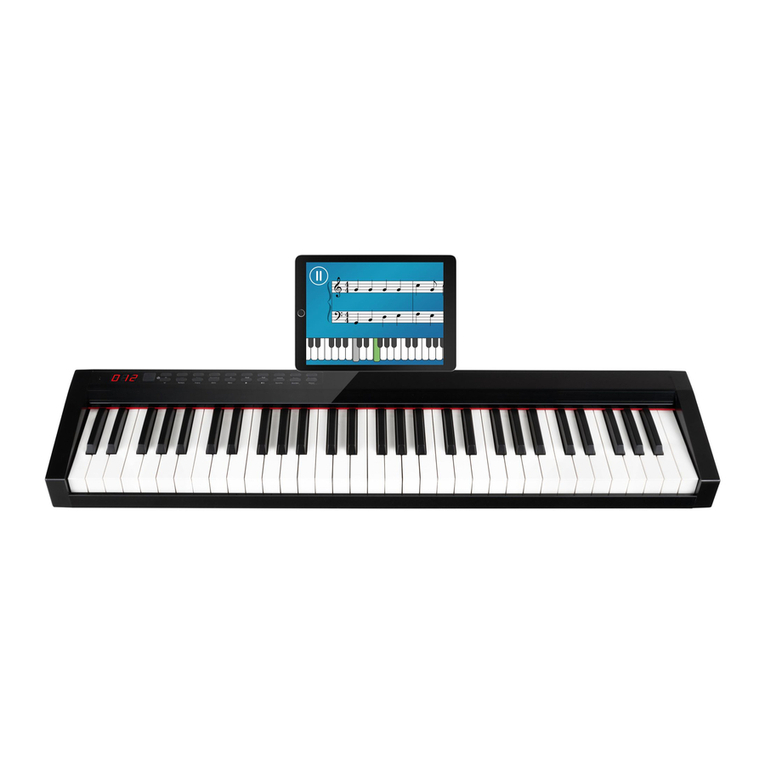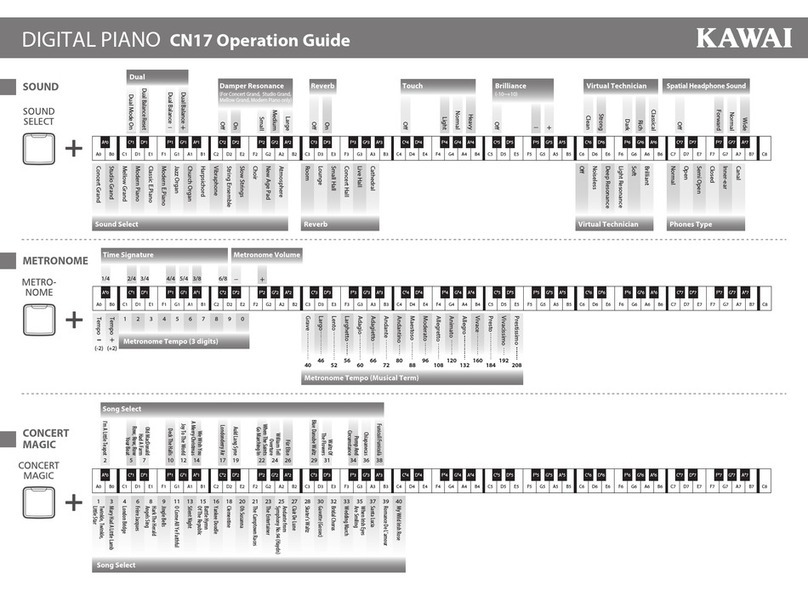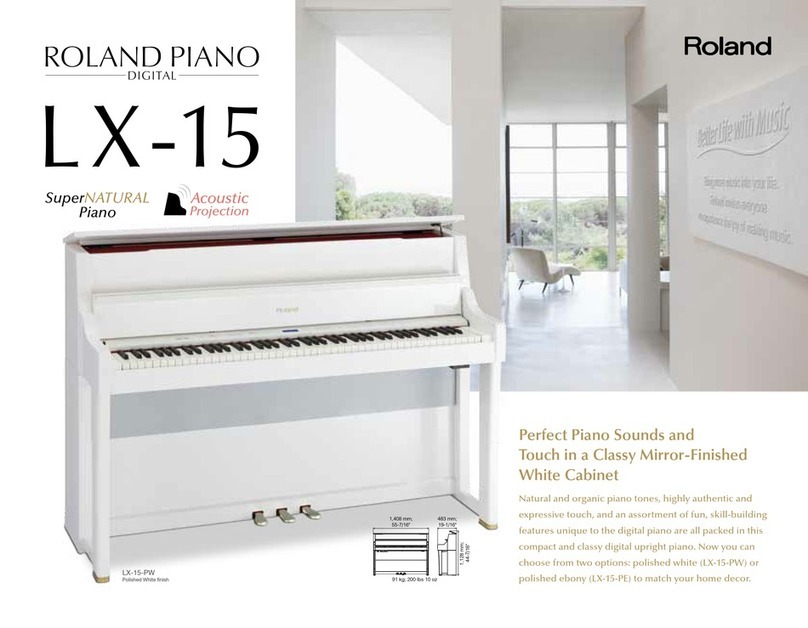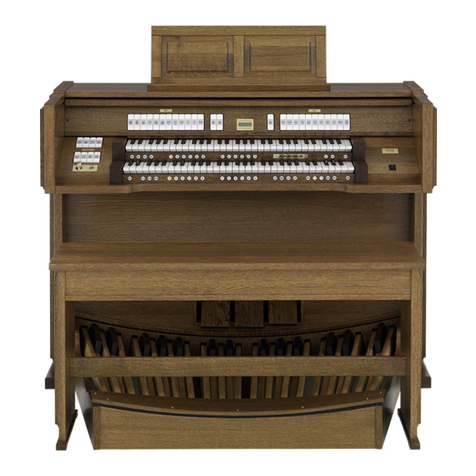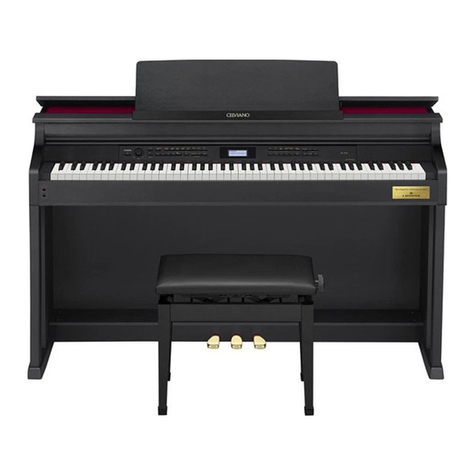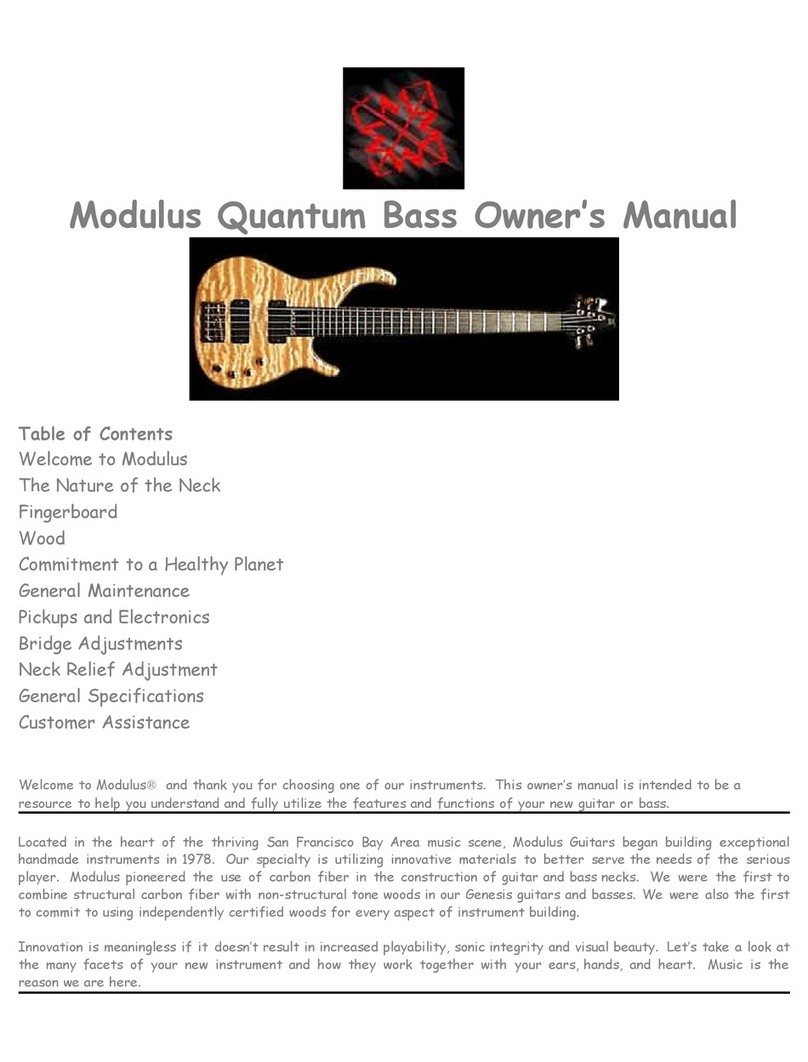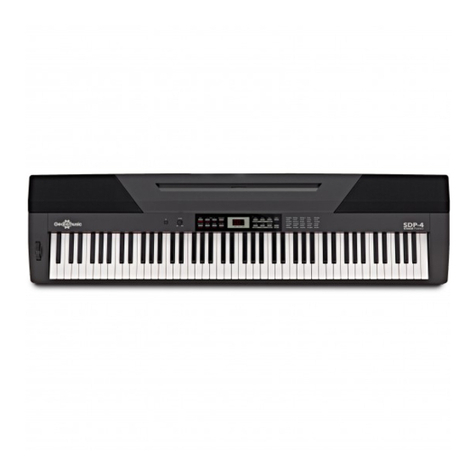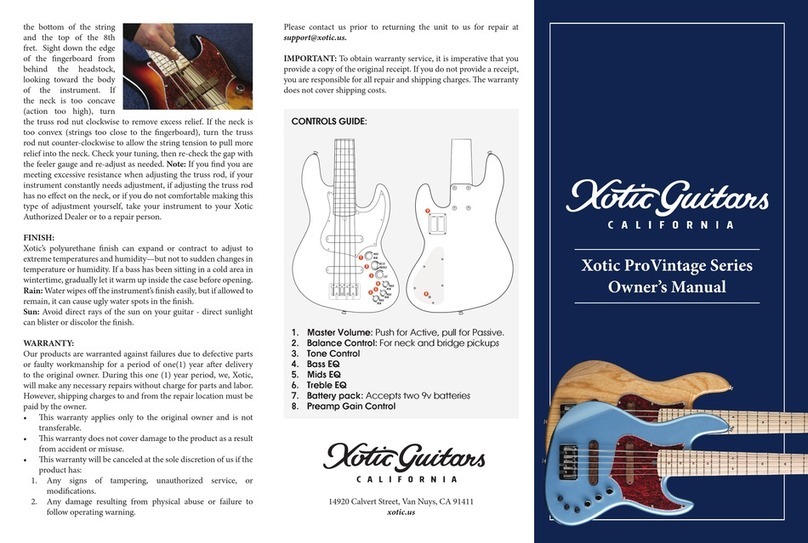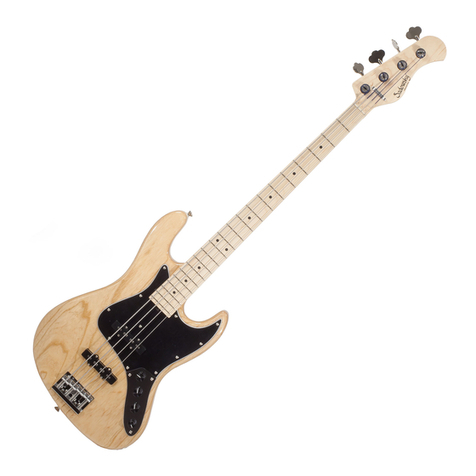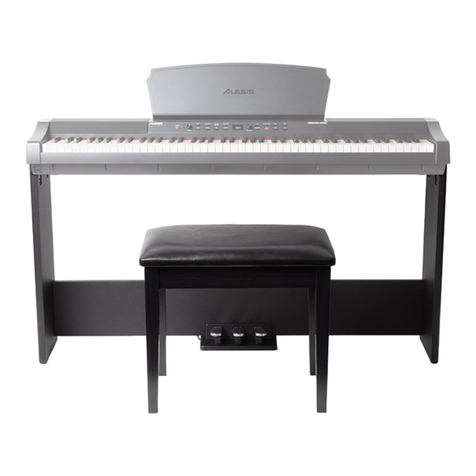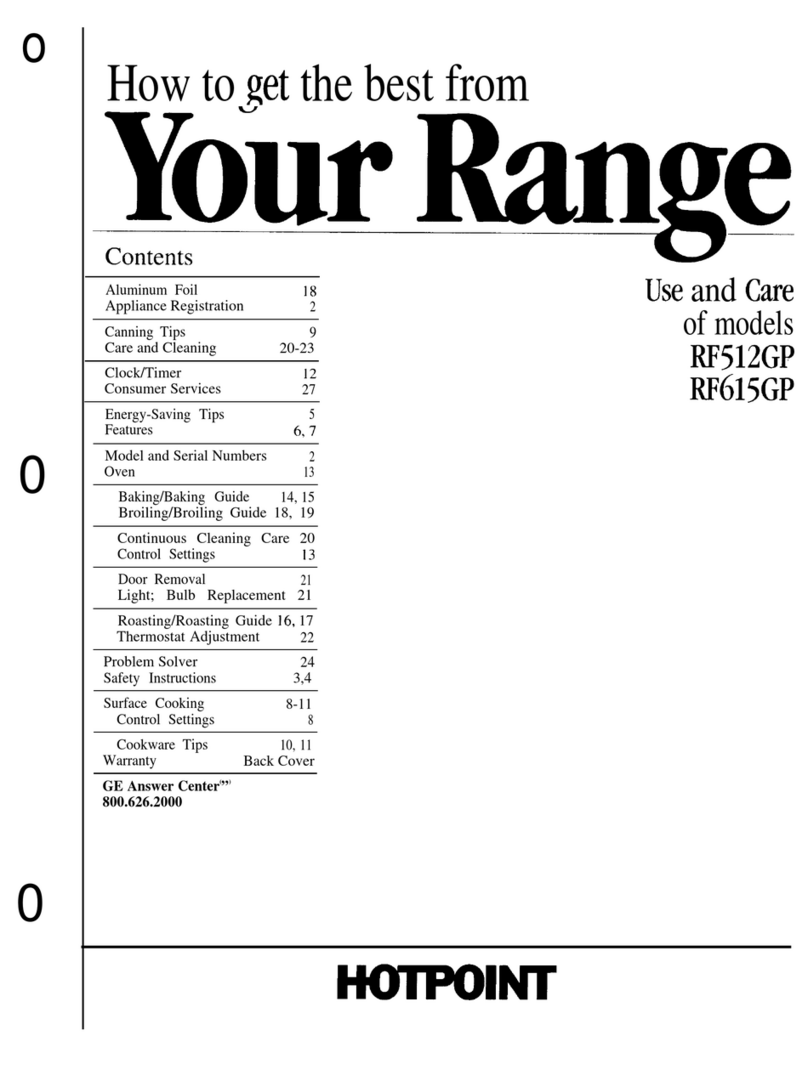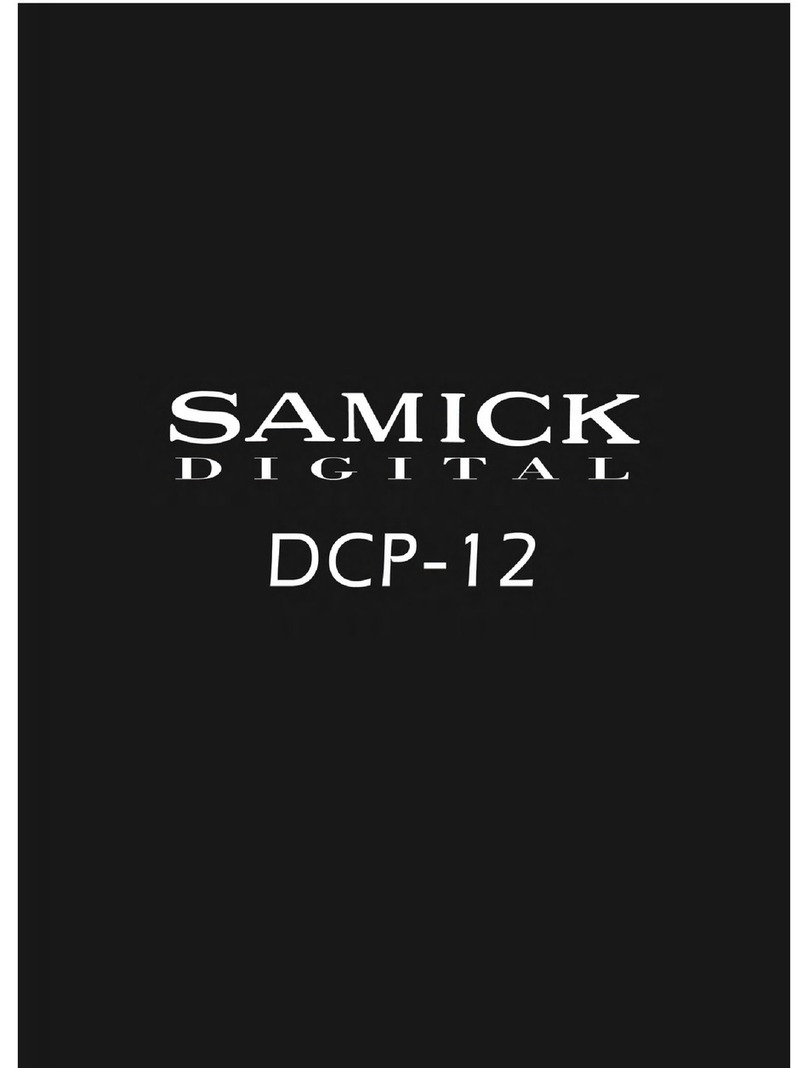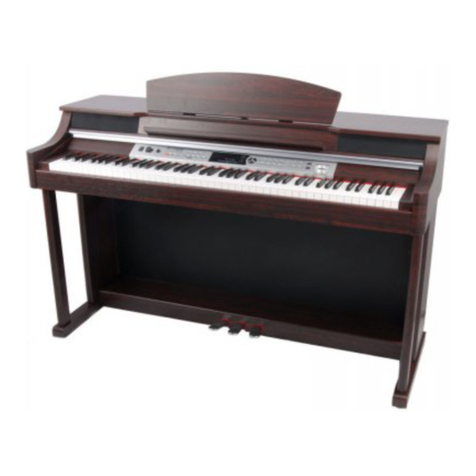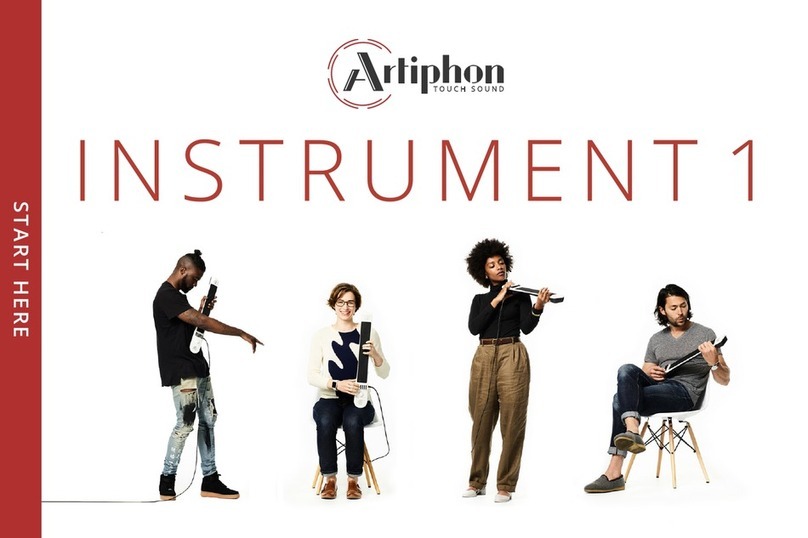
MIDI Data Format / MIDI-Datenformat / Format des données MIDI / Formato de datos MIDI
MIDI Reference/MIDI-Referenz/Référence MIDI/Referencia MIDI
4
NOTE:
1 Le DGX-640 fonctionne par défaut (réglages d’usine) comme un
générateur de son multi timbre à 16 canaux. De ce fait, la réception de
données n’affecte ni les voix de panneau ni les réglages de panneau.
Cependant, les messages MIDI figurant dans la liste ci-dessous affec-
tent les voix de panneau, l’accompagnement automatique et les mor-
ceaux.
• MIDI Master Tuning
• Messages exclusifs au système permettant de modifier respective-
ment les types d’effets Reverb, Chorus et DSP.
2 Les messages relatifs à ces numéros de changement de commande ne
peuvent pas être transmis depuis le DGX-640. Il est toutefois possible
de les émettre pendant la reproduction de l’accompagnement ou
l’exécution d’un morceau, et à l’aide de l’effet Harmony.
3 Messages exclusifs au système
<GM System ON>
F0H, 7EH, 7FH, 09H, 01H, F7H
• Ce message rétablit automatiquement tous les réglages par défaut
de l’instrument, à l’exception de la commande MIDI Master
Tuning.
<MIDI Master Volume>
F0H, 7FH, 7FH, 04H, 01H, ll, mm, F7H
• Ce message autorise la modification simultanée du volume de tous
les canaux (Universal System Exclusive).
• Les valeurs « mm » sont utilisées pour MIDI Master Volume. (Les
valeurs « ll » sont ignorées).
<XG Master Tuning>
F0H, 43H, 1nH, 4CH, 00H, 00H, 00H, ddH, ddH, ddH, ddH, F7H
• Ce message modifie simultanément la valeur de l’accord de tous
les canaux.
• Les valeurs « dd » sont utilisées pour XG Master Tuning.
• Les valeurs par défaut de « dd » sont 00H, 04H, 00H et 00H, res-
pectivement.
<Reverb Type>
F0H, 43H, 1nH, 4CH, 02H, 01H, 00H, mmH, llH, F7H
• mm : Reverb Type MSB
• ll : Reverb Type LSB
Veuillez vous reporter à la liste des types d’effet contenue dans le
mode d’emploi.
<Chorus Type>
F0H, 43H, 1nH, 4CH, 02H, 01H, 20H, mmH, llH, F7H
• mm : Chorus Type MSB
• ll : Chorus Type LSB
Veuillez vous reporter à la liste des types d’effet contenue dans le
mode d’emploi.
<DSP Type>
F0H, 43H, 1nH, 4CH, 02H, 01H, 40H, mmH, llH, F7H
• mm : Type d’effet DSP MSB
• ll : Type d’effet DSP LSB
Veuillez vous reporter à la liste des types d’effet contenue dans le
mode d’emploi.
4 Lors du lancement de l’accompagnement, un message FAH est
envoyé. A l’arrêt de l’accompagnement, c’est un message FCH qui
est transmis. Lorsque l’horloge est réglée sur External, les messages
FAH (début de l’accompagnement) et FCH (arrêt de l’accompagne-
ment) sont reconnus.
5LocalON/OFF
<Local ON> Bn, 7A, 7F
<Local OFF> Bn, 7A, 00
La valeur « n » est ignorée.
NOTA:
1 Con los ajustes iniciales (ajustes de fabricación), el instrumento fun-
ciona normalmente como un generador de tonos de varios timbres de
16 canales, y los datos de entrada no afectan a las voces ni a los ajus-
tes del panel. Sin embardo, los mensajes MIDI enumerados a conti-
nuación sí afectan a las voces del panel, al acompañamiento
automático y a las canciones.
• Afinación principal MIDI
• Mensajes exclusivos del sistema para cambiar Reverb Type (tipo de
reverberación), Chorus Type (tipo de coro) y DSP Type (tipo DSP).
2 Los mensajes para estos números de cambio de control no pueden
transmitirse desde el instrumento. Sin embargo, podrían transmitirse
al tocar el acompañamiento, la canción o bien al usar el efecto Har-
mony (Armonía).
3Exclusivo
<GM System ON> (Sistema GM activado)
F0H, 7EH, 7FH, 09H, 01H, F7H
• Este mensaje restituye automáticamente todos los ajustes iniciales
del instrumento, a excepción de la afinación principal MIDI.
<MIDI Master Volume> (Volumen principal MIDI)
F0H, 7FH, 7FH, 04H, 01H, ll, mm, F7H
• Este mensaje permite cambiar simultáneamente el volumen de
todos los canales [Universal System Exclusive (Exclusivo del Sis-
tema Universal)].
• Los valores de “mm” se usan para el volumen principal MIDI. (Los
valores para “ll” se omiten).
<XG Master Tuning> (Afinación principal XG)
F0H, 43H, 1nH, 4CH, 00H, 00H, 00H, ddH, ddH, ddH, ddH, F7H
• Este mensaje cambia simultáneamente el valor de afinación de
todos los canales.
• Los valores de “dd” se usan para la afinación principal XG.
• El valor predeterminado para “dd” es 00H, 04H, 00H, 00H, respec-
tivamente.
<Reverb Type> (Tipo de reverberación)
F0H, 43H, 1nH, 4CH, 02H, 01H, 00H, mmH, llH, F7H
• mm: Tipo de reverberación MSB
• ll: Tipo de reverberación LSB
Consulte la lista de tipos de efectos en el manual de instrucciones.
<Chorus Type> (Tipo de coro)
F0H, 43H, 1nH, 4CH, 02H, 01H, 20H, mmH, llH, F7H
• mm: Tipo de coro MSB
• ll: Tipo de coro LSB
Consulte la lista de tipos de efectos en el manual de instrucciones.
<DSP Type> (Tipo de DSP)
F0H, 43H, 1nH, 4CH, 02H, 01H, 40H, mmH, llH, F7H
• mm: Tipo de DSP MSB
• ll: Tipo de DSP LSB
Consulte la lista de tipos de efectos en el manual de instrucciones.
4 Cuando se inicia el acompañamiento se transmite un mensaje FAH.
Cuando se para el acompañamiento, se transmite un mensaje FCH.
Cuando el reloj está ajustado en externo, FAH (inicio del acompaña-
miento) y FCH (parada del acompañamiento) se reconocen.
5 Local ON/OFF (Local activado/desactivado)
<Local ON> Bn, 7A, 7F
<Local OFF> Bn, 7A, 00
El valor para “n” se omite.
U.R.G., Pro Audio & Digital Musical Instrument Division, Yamaha Corporation
©2010 Yamaha Corporation
A0
